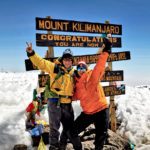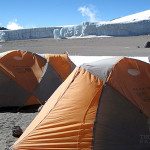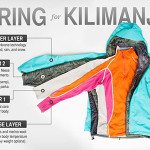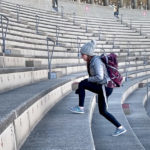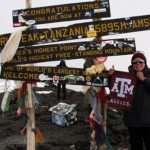When you’re trying to pack Kilimanjaro gear that keeps your duffle bag under the required 33-pound limit, do you really need gaiters? Nasal decongestant? A nail brush?
Everything you see on our expert-curated Kilimanjaro packing list is there for a specific reason. Don’t just take our word for it! We asked our trekking guests on Facebook and Instagram to share what gear they were thankful to have on Kilimanjaro. Their answers (and our commentary) are below!
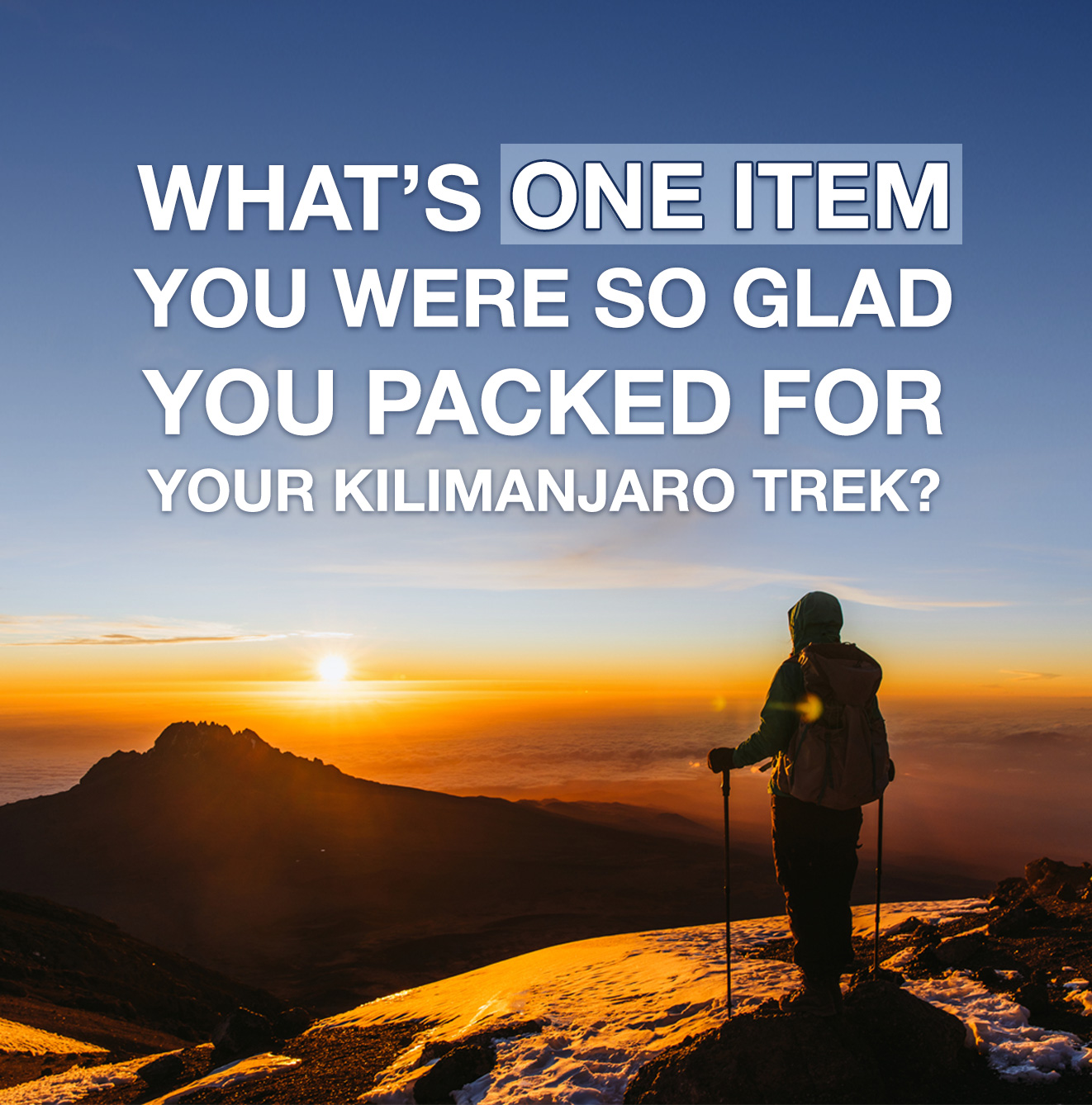
TOILETRIES
Lip Balm with SPF: Lisa M. and Marie E.
Beyond 12,000 feet, the air on Kilimanjaro has no moisture. Lip balm should be a core part of your gear setup, helping you stay hydrated while protecting you from the sunburns that are easy to obtain near the equator.
Vick’s: Elda M.
Similarly, the arid air on Kili can irritate your sinuses and skin without proper protection. Vick’s will do the trick when your throat gets dry.
Menstrual Cups: Courtney Z., and body wipes, dry shampoo, pantyliners: Eliza H.
Hygiene deserves a place of central consideration before every Kili trek. Staying clean and refreshed keeps you focused on what matters: the climbing.
Among everything she brought to Kili, Eliza said that pantyliners were one of her “most loved, least talked about items.”
“Pantyliners makes peeing on the trail a drier experience,” Eliza said. She suggests wearing them to avoid the need for toilet paper–clean, quick and easy.
Nasal decongestants: Barb U.
Nasal congestion is common at altitude, and decongestants (such as nasal strips) offer relief.
Nail Brush: Shelby E.
Between the rocks, the potential rains, the dust and the wind, you can get filthy on Kili. A nail brush is one of those quality-of-life items that are small enough to tuck away anywhere. It’ll help you get tidy before meals, bed or a nice summit photo!
CLOTHING
Merino wool base layer: Öykü A., thick wool socks: Elda M.
Wool layers are incredible: they block the cold, stifle the wind and reduce the possibility of sweat buildup that would eventually make you feel colder.
Elda said she also appreciated the advice her guides gave her: change your clothes before falling asleep, so you don’t have to get dressed in the frigid morning!
Puffy jacket: Marie E., Cindy T.
Cindy appreciated the warmth and quality of her Arc’teryx puffy jacket and added, “Hand warmers on summit day were a life-saver!”
Gaiters: Aimee M.
Neck gaiters are an easy, lightweight layer to take on and off as the cold weather fluctuates. They protect your sinuses from dry air and dust. The air gets sooty on the descent from Uhuru Peak, which is mostly scree.
Leg gaiters are just as important. They’ll protect your calves from the rough stuff as you step through snow, mud, rocks and so on. They’ll also keep your boots, pants and socks dry.
Extra gloves: Paul J.
“I was one of those naïve folks that assumed I couldn’t possibly need all that winter gear,” Paul said. “The mountain is almost on the equator, after all!”
After a night in Barranco Camp, where Paul woke up to a frozen tent and nearly-frozen fingers, he said, “I realized it had been a good idea to pack the extra gloves.”
ADDITIONAL GEAR
Water bottle: Carol C.
It goes without saying that you must drink a lot of water on Kilimanjaro. But it can be easy to forget to do so. Thankfully, Thomson guides are well-attuned to trekkers’ needs and will regularly remind them to take breaks, drink water and get recentered before resuming the climb.
Water bladder: Erica M.
“I was able to drink more because the water was easily accessible,” Erica said of her backpack bladder. Some people prefer bladders over bottles for this reason. However, in the colder conditions found on Kilimanjaro, water can freeze in the tubes and render the bladder useless.
For this reason, we usually don’t recommend bladders. If you decide to go this route, it’s advisable to carry some water bottles as backups.
Trekking poles: Michael M.
Trekking poles distribute weight more evenly through the body, allowing the upper body to take the stress off the legs. They are a great way to conserve energy on long treks, and those with a tendency for knee pain have found poles help minimize it. Many trekkers consider them a must-have.
“I’d never used poles on any other hikes, and they just seemed unnecessary,” Michael said. “These helped me stay stable during the climb…my trekking poles were one thing I’m very glad I packed.”
MP3 player to sleep at night: Öykü A.
Many guests bring MP3 players to the mountain to help them sleep. Others listen to music that will hype them up for the day’s coming hike. One guest even made a Kilimanjaro trekking playlist, and played “Gonna Fly Now” from the “Rocky” movies as he summited!
Hot water to keep you warm at night: Lisa M.
Your guides will fill your bottle with boiling water for your sleeping bag. The heat will keep you warm through the night. It’s like a mountaineer’s electric blanket–you won’t believe how long the heat lasts!
My sisters: Henry T.
Trekking is an experience that builds trust, deepens bonds and creates lifelong memories. It’s an opportunity to disconnect from technology and reconnect with each other in pursuit of a shared goal. Hats off to Henry and his sisters for completing a trek together!
Camera: Gulesi A.
Dedicated Nalgene water bottle for nighttime bathroom needs: Leigh Z.
It may sound unconventional to some, but Leigh said she was thankful she brought “a Nalgene 100% dedicated to middle of the night potty needs, so I didn’t have to leave the tent.”
Given that it can drop below zero degrees at night on Kili, this alternative eliminates the need to leave your tent and expose yourself to the night air when you use the bathroom tent.
Whatever you do, the important thing is that you don’t resist the need to use the restroom! It will not only distract you from getting back to sleep, but it will make you feel colder because your body works to keep your bladder warm.
Solar cell phone charger: Cathie M.
Cold temperatures drain batteries. If you intend to use your cell phone as a camera on Kilimanjaro, it helps to have a charging plan–you don’t want to make it all the way to Uhuru Peak and realize it won’t turn on!
A solar cell phone charger (or a power bank) comes in handy for just these kinds of situations. Pro tip: Stow your electronics with you in your sleeping bag at night. Your body heat will help keep the charge.
Book to read before bed to help sleep: Erin K.

